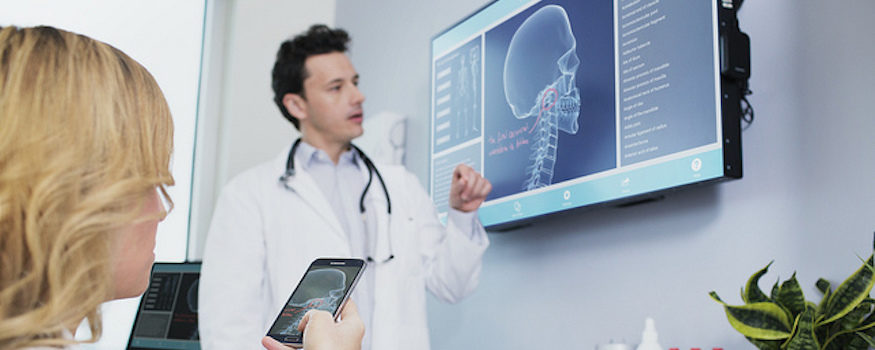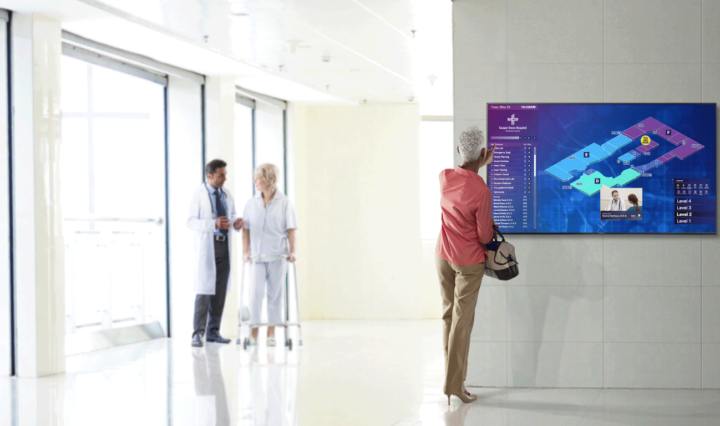In most businesses, internal communication is pretty straightforward. People know exactly where to find their co-workers and which phone extension to dial to reach a particular person. When leaders need to communicate important information to the entire team, it’s easy to get everyone in one room or on one conference call.
Hospital communications aren’t so simple. The staff is always on the move — going in and out of patient rooms, providing updates for families and visitors and transporting patients for various tests and procedures. Everyone works different shifts, and getting the entire staff in one room isn’t usually an option, considering someone has to care for all the patients.
Strategically placed hospital signage can help shore up internal communication gaps. And by improving communications with patients and visitors, it also makes hospital staff more productive.
How Can You Revolutionize the Patient Experience?
See how innovative hospitals are using digital technology to keep patients happy and healthy. Download Now
Real-Time Hospital Communications
Maybe hospital administrators and physician leaders can’t always get everyone in the same room, but there are certain rooms that everyone eventually wanders into.
By installing digital signage in break rooms, nurses stations and other common areas that patients can’t access, hospital leaders can communicate important, updated information across units, floors or the entire hospital. For example, the types of content posted on digital signage screens in these locations can include:
-
Staff schedules
-
Reminders about upcoming training, lectures, blood drives and other hospital events
-
Patient and staff safety warnings
-
Notes about important process or policy changes
-
Photos and bios of new physicians and staff members
-
Employee of the month and other staff recognition
Whatever leaders need to announce, hospital communications can be displayed on an easy-to-read and hard-to-miss screen — no staff meetings, mass emails or cluttered bulletin boards required.
Streamlined Patient Communications
Hospitals can be overwhelming places. Patients are inundated with information when they’re already feeling unwell and anxious. Family and friends are worried about their loved ones, and often have trouble even finding them in maze-like medical complexes.
In short, everyone has lots of questions. Answering all those questions is key to delivering a great patient experience. But the more time care providers spend updating families and redirecting lost visitors, the less time they have to answer their patients’ questions and provide disease management education.
Hospital signage removes some of that burden for staff. Digital wayfinding signage provides visitors with step-by-step directions to their destinations, while waiting room signage keeps families updated on the status of surgery patients.
Meanwhile, in patient rooms, digital whiteboards answer many of the most frequently asked questions — from “How do I order lunch?” to “When is my CT scan?” to “What’s my doctor’s name again?” When those digital displays are paired with tablets and hospital TVs, they can deliver even more information, including EHR access and personalized educational videos. This digital communication doesn’t replace patient conversations with care providers, but it can enhance them and ensure patients leave with all the information they need to stay healthy at home.
While patients are busy watching educational videos and visitors are all squared away, hospital workers have time to check out those digital bulletin boards in the breakroom, and maybe even take a little break.
From reducing waiting room anxiety to improving internal communications, digital signage provides many benefits for hospitals. Discover more ways it can enhance the patient experience.









